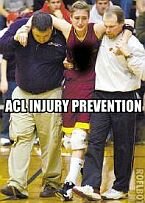STRETCHING: DONT BE SO PASSIVE ABOUT THIS LENGTHY SUBJECT
Its to forget everything your high-school gym coach or workout partner ever told you about stretching. Some of us stretch before we run, some after you run, and some not at all. Which is best? And what does stretching mean anyway?First, defining some terms will be helpful:
Flexibility - The ability to move a joint, or series of joints through a full, non restricted, pain-free range of motion.
Range of Motion The degree of movement that can occur in a joint.
Static Stretching Slowing elongating a muscle group and holding it in the stretched position for a period of time in order to increase flexibility.
Dynamic Stretching Actively contracting and relaxing muscle groups in order to increase flexibility. This can include ballistic stretching, PNF (proprioceptive neuromuscular facilitation), and AIS (Active Isolated Stretching).
Ballistic Stretching - Ballistic stretching uses the momentum of a moving body or a limb in an attempt to force it beyond its normal range of motion.
PNF - Alternating contraction and relaxation of both agonist (muscle you want to stretch) and antagonist (muscle that does the opposite of the muscle you want to stretch) muscles.
AIS Uses an active contraction of the muscle opposite to the one being stretched. Each stretch is held for only two seconds.
Warm-up - A series of movements designed to prepare for athletic activity. It may include stretching.
Most of the confusion about stretching is because in most of the quoted stretching research, there is no definition of the type of stretching and no control of the stretching process. Most research has investigated static stretching and rarely is there control over the stretching process. What has been shown by research is that static stretching will increase flexibility over time (if performed regularly) and that immediately after static stretching muscle power output is diminished. What little research there is on dynamic stretching shows that this may be effective when used as part of a warm-up.
While static stretching is definitely effective at producing a short-term increase in the range of motion at a particular joint as measured in a static position, it is not clear that this additional range of motion will carry over to dynamic movement. Resource
Also, the amount of increase in static flexibility appears to be largely related to the person's tolerance to the discomfort of a stretching position, not major changes in the material properties of the muscle/tendon. Another caveat to this is that passive stretching (using an external force - often a person) can cause a large amount of tension on the muscle (extension). Vigorous, forceful stretching can weaken and injure muscles by stretching ligaments or creating unsafe loads. Resource
Ruth Solomon, Professor emeritus at the University of California, Santa Cruz, states that if you don't stretch and strengthen together, you'll have a weak muscle. The strength must balance the stretch if you want to control your movements. "If the muscles are really stretched out, the ligaments may not be able to protect the joints," she said. "So you get unstable joints, particularly knees, and you may get hyperextension and ligament tears." Resource
A growing number of studies have documented decreased muscular performance after stretching. Dr. Stuart McGill has stated that "static stretching deadens the muscle from a neural perspective - diminishing the stretch reflex and reducing peak strength and power. Resource
This is certainly not advantageous immediately prior to an activity like running. The cause appears to be a decrease in the speed of nerve impulse causing a reduced ability to activate the muscle. This, in turn, decreases the force of muscular contraction.
Another area of confusion lies in the definition of muscle tone. Tone is the resting tension of a muscle brought about by the constant flow of nerve stimuli. Muscle length is usually a physical representation of muscle tone. Abnormal tone can create resistance to the ability of the muscle to elongate. Muscles can be hypertonic or tight and hypotonic or weak. Both tight and weak muscles are usually the result of poor postural and movement habits.
Noted therapist Gray Cook states, the individual with a flexibility problem will actually tighten and contract the muscle that they are trying to stretch. The reason the muscle is tight in the first place, is probably because it is being used improperly. This muscle may be activated twice as frequently as it should because of a lack of muscle strength or coordination in another area of the body. This muscle is actually tight because it's protecting itself; it's been overused and it's generally fatigued. Part of its protection involves shortening its length to reduce its workload (contractile length) and guard against unforeseen stretching. Pushing the stretch can actually, in some cases, make the muscle you're stretching contract even harder. Resource
This is due to Sherringtons Law of reciprocal inhibition a tight muscle will inhibit its antagonist (e.g. tight quadriceps and hip flexors will inhibit the hamstrings).
So what types of stretches should you perform and when should you use them?
The first thing to do is simply identify if you have tight muscles in certain parts of your body. A person can have normal static flexibility in one part of the body and be inflexible or even hypermobile in another. Prior injury, overuse, poor posture, poor running technique, and poor shoes can all cause a lack of flexibility. Is there a symmetry problem right compared to left (right hamstrings to left hamstrings), front compared to back (right quadriceps to right hamstrings), top compared to bottom (shoulder girdle compared to hip girdle)?
By identifying these tight and asymmetrical areas, a proper stretching program can then be developed. Purchase a simple book like Bob Andersons Stretching and attempt stretches for different body parts and assess yourself with static holds of 30 seconds.
As for stretchings part in a warm-up, Dr. Duane Knudson, professor of exercise science at California State University, Chico states, "light to moderate muscle actions of gradually increasing intensity are more appropriate than stretching as warm-up activities for most sports." Resource
"Given that the lowest injury rates seem to correspond to normal flexibility and higher injury rates with the extremes in flexibility (inflexible and hypermobile), maintenance of normal or moderate amounts of static flexibility should be the goal for most people. ... Most athletes with normal flexibility should perform their stretching routines after practice or competition." Resource
The following is a primer on the different stretching methods and how to perform them safely and effectively.
STATIC STRETCHING
Static stretching is the simplest method of stretching. It can tell you which of your muscles are tight, if there are any asymmetries, and can set a baseline for future comparison. I recommend this type of stretch AFTER your workout has been completed. It can be done immediately after or several hours later. The key to static stretching is what I call the BREATHING STRETCH. It is as simple as this:- Place your body part into a position of gentle stretch the stretch should be felt in the belly of the muscle, not the tendon or joint.
- Take a deep breath in.
- Exhale and increase the stretch position ever so slightly. Just take what your body will give you. THIS SHOULD BE COMFORTABLE, NOT PAINFUL! DO NOT HOLD YOUR BREATH!
- Repeat this process until you can no longer increase your range of motion. It may be two cycles or 10 cycles, again, just take what your body gives you do not force the stretch!
Sport Stretch, Michael Alter, Human Kinetics
ACTIVE ISOLATED STRETCHING (AIS)
AI is a unique, active way to stretch muscles developed by Aaron Mattes (www.stretchingusa.com). It uses an active contraction of the muscle OPPOSITE to the one being stretched. For example, if you lie on your back and raise one leg as high as you can, eventually you will feel the stretch in the rear thigh (hamstring), but you are contracting the front thigh and hip muscles (quadriceps and hip flexor muscles) to raise the thigh. It is this contraction of the opposing muscle group that allows a greater stretch in the muscle being stretched. It would be very helpful to get an anatomy book and learn the different muscles and their function.Here are the rules for AIS:
- Determine which muscle you wish to stretch and the opposing muscle you are going to contract. Make a mental picture in your head BEFORE you start the stretch.
- Actively contract the opposing muscle BEFORE you start the stretch movement.
- Maintain the contraction throughout the entire movement.
- When you reach the end of the movement (as far as you can go COMFORTABLY), maintain that position for no more than 2 seconds. Maintain the contraction of the opposing muscle for those 2 seconds.
- Release the contraction and return to the starting position.
- Exhale during the stretching phase and inhale during the recovery phase. DO NOT HOLD YOUR BREATH!
- Repeat the process 10 times and with each subsequent stretch attempt to increase the range of motion each time.
- STRETCHING SHOULD NOT CAUSE PAIN!
Specific Stretching For Everyone, Aaron Mattes www.stretchingusa.com
The Whartons Stretch Book, Jim and Phil Wharton, Three Rivers Press
FACILITATED STRETCHING
Facilitated Stretching is another type of active stretching developed by physicians and therapists over the last 50 years. The method I describe below uses active motion and isometric muscle contraction to improve flexibility. Another name for facilitated stretching is CRAC contract relax antagonist contract. You will need a strap (Stretch Out Strap) or partner for many of the stretches. Using the same example as in the AIS section, lie on your back with the strap around your foot and actively contract the hip flexor muscles to lift your leg to the point when you feel a stretch in the hamstring. Do not just pull your leg up with the strap. At this point, keep your leg in this position and push your heel into the strap toward the floor for 5-10 seconds. Now you are contracting the SAME muscle you are stretching. Then, release the contraction and ACTIVELY raise your leg higher; use your hip flexor muscles, not the strap. This will be repeated several times.Here are the rules for Facilitated Stretching:
- Determine which muscle you wish to stretch. Make a mental picture in your head BEFORE you start the stretch.
- Actively contract the opposing muscle to move your limb or body to the point when you feel a MILD stretch.
- Contract the muscle you are stretching into the strap or your partner and hold for 5 10 seconds. The force of the contraction should be relevant to the condition of the muscle. For example, if the muscle has been injured, do not apply a maximum contraction.
- Release the contraction and use the opposing muscles to move your limb or body to the point when you feel the stretch again.
- Inhale during the contraction phase (when you are contracting the muscle being stretched) and exhale during the lengthening phase (when you are contracting the opposing muscle group). DO NOT HOLD YOUR BREATH!
- Repeat this process until you can no longer increase your range of motion. It may be two cycles or 10 cycles, just take what your body gives you.
- STRETCHING SHOULD NOT CAUSE PAIN!
1. Facilitated Stretching, Robert McAtee and Jeff Charland, Human Kinetics
|
The Ultimate Nutritional Lie Detector Test LEARN MORE 
|
Kettlebell Rehab

Click Here
To See How Kettlebells will transform your body!
Vortex Rehab

Click Here
To See How This
Revolutionary Machine
Can Help You!
Partner / Support

Loans up to 3 months - fast cash advances for up to 90 days and up to $5,000!


















